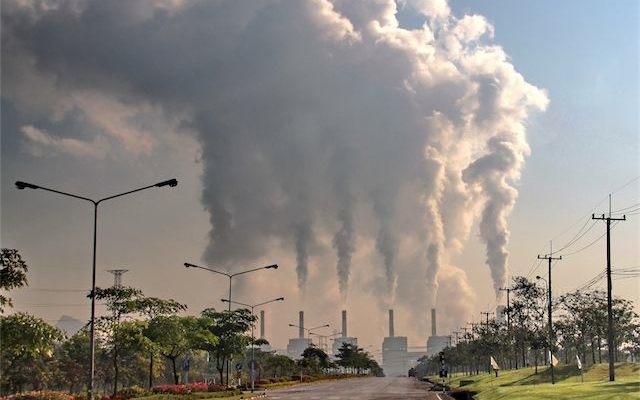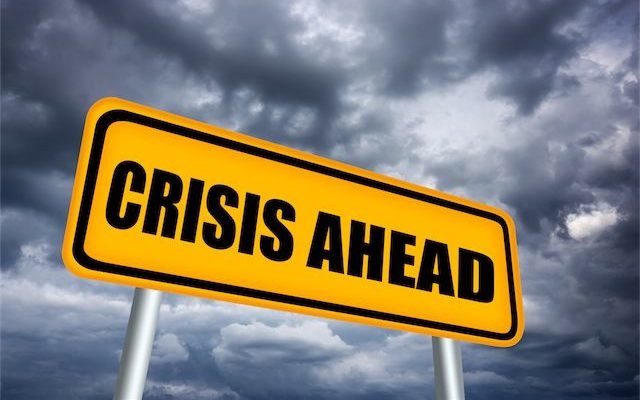The Human Cost of Acidified Seas
Large, high-energy ocean animals can’t survive acidified seas of jelly and slime. And it’s an open question whether humans can long live in such a world.
Monkey Trap: The Curse of Fossil Carbon
People don’t usually think of it this way, but the destruction of the natural world has been largely caused by history’s biggest monkey trap.
And we’re the monkeys.
There are various sorts of monkey trap, but the concept is that monkey curiousity will lead to them discovering something they aren’t willing to let go of. For instance, a banana in a jar, which won’t come out of the jar with a monkey fist around it.
Mankind became much more successful by making a symbiote of fire, burning wood for heat, for protection, and to cook many foods for easier digestion.
We had no way of knowing that this would lead us to a fateful trap which was set long before humans or monkeys evolved on the earth, before mammals existed, back when the seas were toxic and the skies were green.
The giant monkey trap was coal from ancient forests and oil from ancient seas. It took hundreds of millions of years to form, as biological and geological processes sequestered it underground, allowing the earth conditions in which we and most of the other species we know evolved.
Only recently, we discovered we could get it out of the ground and burn it. In ever larger quantities. We’ve been doing it faster and faster for nearly 200 years. And in another 200 years it will be gone.
200 years seems like a long time. But burning fossil carbon will be the tiniest blip in history. Once it’s gone, we’ll be back to using energy from the sun and from burning wood again. But on a very different planet.
The planet we evolved on had bountiful seas. The human species has faced past bottlenecks when we nearly died out, and perhaps survived in shoreline caves by eating seafood. The planet we evolved on had pristine forests teeming with wildlife, and easy availability of metal ores. On a heating planet depleted by industry, that will no longer be true.
We don’t normally question the good luck of having coal and oil to dig up. It seems to make the economy prosper. It makes things move. It makes us powerful.
But it has led us into unsustainable overshoot. We’re now committed to a 10 billion population, when the children already born mate with each other and reproduce. The earth doesn’t have anything like the capacity to provide for that many. We have artificially built up a radically high population by, in effect, becoming detritivores. Eaters of debris.
That is, in a real way we have been eating fossil carbon to create our billions. Most humans throughout history had proteins made from nitrogen in plants they or their prey ate. You, dear reader, have body protein mostly made in a factory with the Haber-bosch process, from natural gas. That’s because you’ve eaten food which has been grown on increasingly sterile soil by heavy application of fertilizer, herbicides, and pesticides. By the time food gets into your mouth, only about 10% of the energy embodied by it is from the sun.
There’s no shame in being a detritivore. But there is a catch, and the catch is the same catch faced by yeast in a corked wine bottle. The supply of fuel is limited, and using it up poisons our world. In the case of yeast, it means a huge population expansion, then a total dieoff, resulting in wine. Unfortunately, in our case we’re affecting the entire world.
So the ancient monkey trap has laid there waiting for monkeys, and then humans, to evolve. We are driven by pursuit of short-term pleasure, comfort, and advantage to keep burning it, not letting go of how it makes us feel. We prefer not to think about the future, about the cost of cars and Walmart and amusement parks and disposable computers and all that constitutes modern society.
Yet the only way for our species and world to survive, to back out of the monkey trap, is to let go of that fire we think we need.
It’s a trap, a curse. Only now can we see its outline, start to see the downside of our collusion with entropy. And most of us deny it, because denying it is so easy.
But it’s important to remember that we were not doomed by some tragic flaw in human nature, though there are certainly plenty enough flaws in human nature to keep history interesting. No, it was the trap of fossil carbon which enabled us to get into this much trouble. Burning wood, we couldn’t have gotten anywhere near this population, would never have made nuclear weapons, could not destroy the seas. It was an accident, a coincidence, that earlier ages were hellish, and trapped carbon we can now dig up and burn.
It isn’t fair. It’s just reality.
We CAN choose not to keep burning it. In principle. The tragedy is that we may continue to choose the fire over the earth.
“The health of the ocean is spiralling downwards far more rapidly than we had thought. We are seeing greater change, happening faster, and the effects are more imminent than previously anticipated. The situation should be of the gravest concern to everyone since everyone will be affected by changes in the ability of the ocean to support life on Earth.”
– Alex Rogers, Professor of biology at Oxford University
At Stake: a decent human future
Here’s a concept for you.
The trillionth human childhood.
It sounds like science fiction, the stuff of wild fancy. Yet why should it?
For the only way that trillionth human childhood can fail to be lived, is if we preclude its possibility. As we’re now doing.
It has been said – incorrectly – that half of all humans who have ever lived are alive today. If you actually do the math of populations since modern humans evolved, you find that there have been between 70 and 110 billion human lives lived to date. Since it’s a rough estimate, let’s round it to the nearest order of magnitude and call it 100 billion.
There are currently something over 7 billion humans alive, and we’re on our way toward 10 billion as we keep doin’ what comes naturally. So the people alive today are about 7% of all homo sapiens who have lived, ever.
Even before we found fossil carbon, we were a very successful species. Had we not found and started burning fossil carbon, there’s no a priori reason our species would not have stabilized out at a population of a billion or so, and maintained that for hundreds of thousands of years.
In fact, barring something like an asteroid hitting the planet, the only thing that could prevent the trillionth childhood is to screw up a perfectly-functioning world all by ourselves.
And for perspective, let’s note that there have been huge meteor impacts throughout the history of life which DID NOT cause mass extinction events. Ocean acidification and CO2 heating, coupled with our other byproducts, are a more serious problem than most giant meteor impacts.
So it isn’t just dolphins, whales, tuna and other critters at existential risk from ocean acidification and CO2 heating of the planet. It’s the trillions of human children who could have, should have, existed in a healthier world with living seas to provide for them.
We are at war with those children. And we’re winning. They’re disappearing silently from probability as we preclude the possibility of their existence.
That’s the cost of reducing the earth’s carrying capacity, burning all the carbon we can dig up, wasting a planet’s resources on a single generation of disposable junk. We condemn future children to an impoverished existence, and far lower populations.
As things now stand, the trillionth human childhood is in deep jeopardy. It’s science fiction. It seems unreal.
And that’s the danger.
– DJ White, director, FutureSeas campaign
DJ recommends you watch this excellent video by NRDC, on ocean acidification.



























